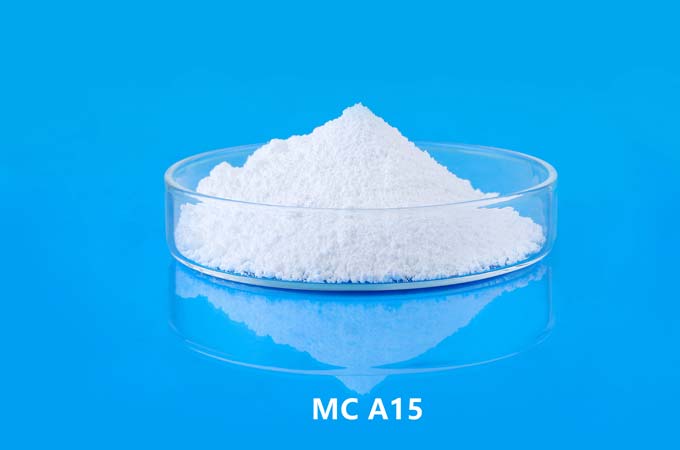Hydroxypropyl Methyl Cellulose (HPMC) is a polymer compound commonly used in building materials. Due to its unique chemical properties, it is widely used in dry-mix mortar and other building materials. HPMC can not only improve the construction performance of mortar, but also improve its overall quality and durability.
1. Chemical properties of HPMC
HPMC is a cellulose ether derivative, which is mainly modified by introducing methyl and hydroxypropyl groups on the hydroxyl groups of natural cellulose. Its most notable feature is its good performance in water solubility, salt tolerance and biodegradability. HPMC can dissolve quickly in water to form a transparent viscous solution, is stable to acids and alkalis, and has a wide temperature adaptability, making it an ideal additive in dry-mix mortar formulations.
2. The main role of HPMC in dry mixed mortar
Water retention One of the most important functions of HPMC is to enhance the water retention capacity of dry-mix mortar. Rapid loss of water in the mortar can lead to loss of strength, cracks and other construction problems. By adding HPMC, water evaporation can be effectively slowed down, ensuring that the mortar maintains good wettability and bonding properties during the construction process, thus extending the operability time.
Improved rheology HPMC has excellent thickening and plastic deformation properties, which can improve the fluidity and workability of dry-mixed mortar, making it easier to spread and smooth. HPMC molecules form a flexible network structure in the mortar, making the mortar less prone to delamination and segregation during mixing and use, while maintaining uniform texture and fluidity.
Enhance bonding performance The bonding performance of mortar is one of the key indicators for its application in construction projects. HPMC can effectively enhance the adhesion between dry-mixed mortar and the base layer, ensure its firm bonding with base materials such as bricks and gypsum boards, and avoid hollowing, cracking and other phenomena after construction. In addition, HPMC can improve the adhesion of mortar to smooth or less absorbent material surfaces.
Prolonged open time The water retention and rheology properties of HPMC help extend the open time of the mortar, which is the time between when the mortar is laid and when it begins to set. Extended opening hours are critical for large-area construction or complex construction scenarios because it gives workers more operating time to make adjustments and repairs without worrying about the mortar hardening too quickly.
Crack resistance and sagging resistance In vertical construction, sagging and sagging of mortar often affect the construction quality. By improving the cohesion of mortar, HPMC reduces the risk of mortar slippage and sag, thus improving the accuracy and aesthetics of construction. In addition, due to its good water retention and toughness, HPMC can effectively reduce the cracking problem of mortar during the drying process and improve its crack resistance.
Durability and Freeze-Thaw Resistance HPMC also plays an active role in improving the durability of dry-mix mortar. It can effectively resist damage to mortar caused by freeze-thaw cycles. Especially in cold construction environments, the use of HPMC can improve the freeze-thaw resistance of mortar, thereby extending the service life of the building.
3. Specific applications of HPMC in different types of dry-mixed mortars
Masonry Mortar In masonry mortar, HPMC is mainly used to improve the water retention and bonding properties of the mortar. During masonry, HPMC can ensure the adhesion between bricks and mortar, making the masonry structure more stable and durable. In addition, its crack resistance prevents the appearance of cracks on the masonry surface.
Plastering Mortar The role of HPMC in plastering mortar is mainly to improve the workability and water retention of the mortar, making it easier to apply and less likely to sag during plastering construction. HPMC can also help the plaster layer to firmly bond with the base layer, avoid cracking and hollowing, and improve the flatness and smoothness of the plaster layer.
Tile Adhesives Among tile adhesives, HPMC is mainly used to improve the operability, bonding strength and anti-slip performance of the adhesive to ensure the stability and aesthetics of the tiles during laying. The use of HPMC can also effectively avoid quality problems such as tile shedding and hollowing.
Self-leveling mortar Self-leveling mortar needs to have good fluidity and adhesion, and the thickening and water retention properties of HPMC can help achieve these requirements. By controlling the amount of HPMC added, it is possible to ensure that the self-leveling mortar maintains fluidity without causing construction problems due to excessive flow.
4. HPMC dosage and usage precautions
The addition amount of HPMC in dry mixed mortar is usually low, generally between 0.1% and 0.5%. Depending on the application scenario and mortar type, the amount of HPMC may be adjusted. Although HPMC can significantly improve the performance of mortar, excessive use may lead to a decrease in the strength or workability of the mortar. Therefore, scientific proportioning should be carried out according to specific needs in actual applications.
HPMC easily absorbs moisture in a dry state, so it needs to avoid contact with humid environments during storage to avoid affecting its performance. When using, it is recommended to mix HPMC thoroughly with other dry powder materials to ensure that it is evenly distributed in the mortar to obtain the best results.
The application of HPMC in dry-mix mortar provides the construction industry with a better choice of materials. By improving key properties such as water retention, bonding performance, and crack resistance of mortar, HPMC improves the overall quality and durability of mortar, while also bringing more convenience to the construction process. As an important chemical additive, HPMC will continue to play an integral role in future building materials.
Kima Chemical provides premium cellulose ether products, such as wholesale HPMC suitable for a wide range of industrial applications. With outstanding customer support, we ensure that our clients receive the best service and tailored solutions to meet their specific needs.
 English
English 日本語
日本語 français
français Deutsch
Deutsch Español
Español italiano
italiano русский
русский português
português العربية
العربية Türkçe
Türkçe Nederland
Nederland



